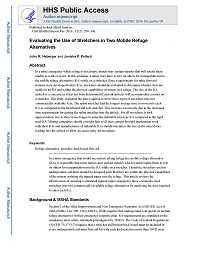Mining Publication: Evaluating the Use of Stretchers in Two Mobile Refuge Alternatives
Original creation date: July 2016
In a mine emergency where refuge is necessary, miners may sustain injuries that will render them unable to walk or crawl. In this situation, a miner may have to rely on others for transportation into the mobile refuge alternative (RA) while on a stretcher. Since requirements for mine first-aid stations were developed before RAs, stretchers should be evaluated to determine whether they are usable in an RA and within the physical capabilities of miners in a refuge. The size of the RA airlock is a concern, as it has not been determined if current airlocks will accommodate a miner on a stretcher. This study evaluated the time required to move three types of stretchers into two commercially available RAs. The splint stretcher had the longest average time to move into each RA as compared to the backboard and soft stretcher. This increase was mostly due to the increased time requirements for getting the splint stretcher into the airlock. For all stretchers, it took approximately two to three times longer to enter the inflatable tent-type RA compared to the rigid steel RA. Mining companies should consider how well their current first-aid implements work with their RAs and manufacturers of inflatable RAs should maximize the size of the outer doors leading into the airlock to allow an easier entry for stretchers.
Authors: J Heberger, JP Pollard
Peer Reviewed Journal Article - July 2016
NIOSHTIC2 Number: 20049104
J Saf Health Environ Res 2016 Jul; 12(2):298-306
See Also
- Emergency Escape and Refuge Alternatives
- Emergency Response Planning for Small Mines: Who Needs It?
- How to Operate a Refuge Chamber: A Quick Start Guide
- Refuge Alternatives in Underground Coal Mines
- Refuge Chamber Expectations Training - 1.0
- Refuge Chamber Training Products and Guidance
- Technology News 537 - NIOSH Develops New Mine Refuge Chamber Training
- Underground Mine Refuge Alternatives: A Look at Food, Water and Sanitation Requirements
- Using the Internet to Train Emergency Command Center Personnel
- When Do You Take Refuge? Decisionmaking During Mine Emergency Escape
- Content source: National Institute for Occupational Safety and Health, Mining Program


 ShareCompartir
ShareCompartir
